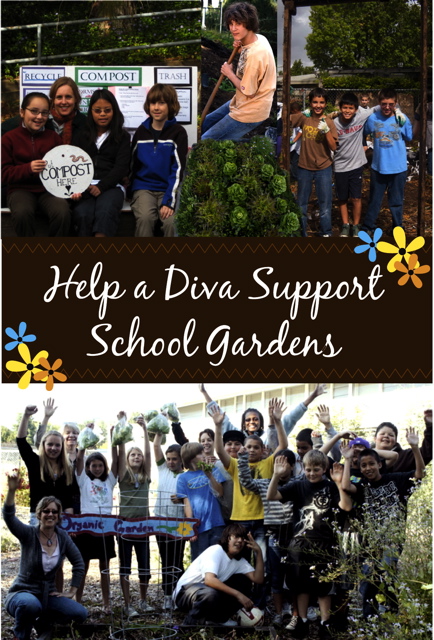
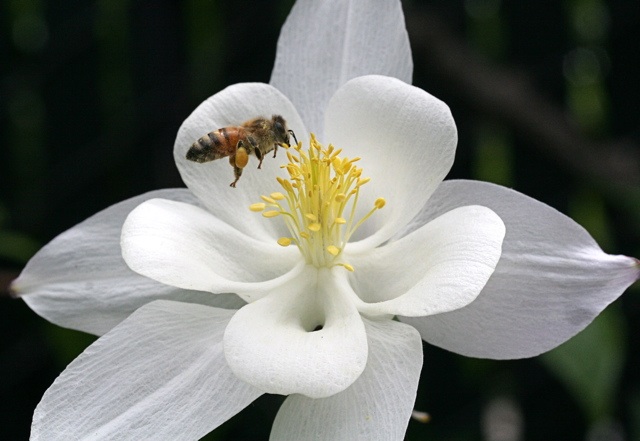
Photo Courtesy of Annie's Annuals and Perennials
Though worldwide bee health has been on the decline since the 1990s, it wasn't until the fall of 2006 that beekeepers nationwide began noticing millions of bees vanishing from their hives. This syndrome, named Colony Collapse Disorder, or CCD, is characterized by the disappearance of adult honey bees from the hive, leaving the newborns to fend for themselves. Ever since, researchers worldwide have been scrambling to discover why bees are dying in record numbers. If you're not a huge fan of the bee, why should this matter to you? Well, if you like to eat food, you should be concerned.
Besides gathering nectar to produce honey, bees pollinate agricultural crops, home gardens, orchards and wildlife habitat. As they travel from blossom to blossom in search of nectar, pollen sticks to their furry body and is transferred to another flowering blossom enabling it to swell into a ripened fruit. Bees have been doing this (for free!) for nearly 100 million years.
Almonds, avocadoes, blueberries, cantaloupes, cherries, cranberries, cucumbers, watermelon and many other best-selling crops all rely on honey bees for pollination. It's estimated that about one-third of the human diet is derived from insect-pollinated plants and three-quarters of all plants on the planet depend on insects or animals for pollination.
"Most scientists now believe that we have been losing more than a third of our hives each year since 2006 from a combination of factors: pathogens, pesticides and nutritional stress," says Heather Pilatic, co-director at Pesticide Action Network. "The debate has lately been over which is the more critical catalyst, and in the last year pesticides have rapidly risen to the top."
(Ta-da! I could have so told you that! In fact, I think I did in my book, Talking Dirt: The Dirt Diva's Down-to-Earth Guide to Organic Gardening (Penguin, 2010).)
"Despite science that shows a key part of the problem is increased exposure to a class of systemic pesticides (neonicotinoids), policymakers and the pesticide industry have failed to act. The main question now is whether EPA will take action on a timeline that matters," says Pliatic. "EPA is currently reviewing the pesticide clothianidin. Their current plan of issuing a decision in 2018 that will then take five more years to implement clearly does not meet that test."
2018! We're all gonna starve by then! What the hell are they smoking over there? Can't we listen to science? According to Pesticide Action Network, three different recent studies confirm that low-level exposures to neonicotinoids with a common pathogen to dramatically increase bees' susceptibility to infection and the likelihood of death.
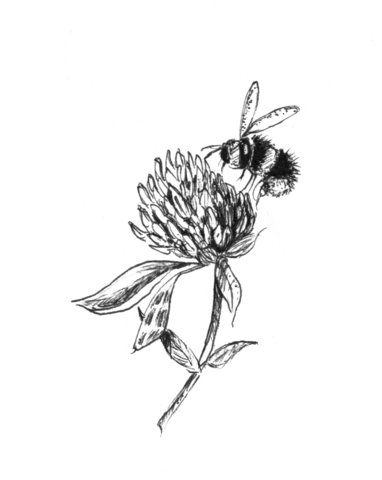
Artwork courtesy of Maggie Agro
"In one long-awaited study Italian researchers have proven, yet again, that in a single flight over freshly-sown corn fields, bees can be exposed to neonicotinoid-contaminated dust from planters depositing treated seeds at acutely toxic levels," says Pilatic. "This means they die right away. These same researchers have shown in 2010 and 2011 that sub-lethal exposures impair bees' learning and memory."
Another new study released in Science shows that honeybees foraging and homing abilities were disrupted by sub-lethal (not sufficient to cause death) neonicotinoid exposure. And a Harvard study found that after exposure to one neonicotinoid called imidacloprid, 94 percent of the hives died.
The really scary part is that neonicotinoid pesticides are systemic, which means they are present in every part of a treated plant and long-lasting in our soil. Which means pesticide residue travels into our groundwater, into our food and into our bodies.
Sigh, Rachel Carson must be turning in her grave at our negligence. (Don't know who Rachel Carson is? Google it. Then read her best-selling book Silent Spring, where Carson, a marine biologist, wrote 50 years ago, "Can anyone believe it is possible to lay down such a barrage of poisons on the surface of the earth without making it unfit for all life? They should not be called 'insecticides,' but 'biocides.'")
"These new studies strengthen the case that pesticides are indeed a driving force behind CCD," says Pilatic. "And these come on the heels of a year of strong science clearly showing that these pesticides are making bees sick, disrupting critical neurobehavioral patterns like foraging, learning and homing, and indeed, killing bees who may happen to fly over one of our 90+ million acres of freshly planted corn. We know enough to act -- if we didn't a year ago, we certainly do now. It is past time for EPA to take decisive action to protect pollinators."
How can you be part of the solution? Glad you asked.
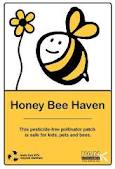
Beyond Pesticides has teamed up with Pesticide Action Network to bring you their Honey Bee Haven, where you can map out your own bee friendly turf, and sign up for periodic updates on the honeybees. Visit www.honeybeehaven.org
Then, think about losing your lawn. 11 percent of all U.S. pesticide use is in lawns. Lawns are sterile, useless, water-guzzling bio-systems! Instead plant a victory garden (edibles and ornamentals) or a drought-tolerant, native, bee-friendly garden. Some really pretty flowers that invite bees are the ones we love from Granny's cottage garden: Sunflowers, Shasta daisy, Black-eyed Susan, Lupine, Aster, Wallflower, Zinnia, Echium, Rosemary, Lavender, Hyssop, Salvia, Buckwheat, Sedum, Coneflower, Rhododendron. Your local, independent nursery will have many of these flowers. If not, go to one of my favorite nurseries to get fabby Granny plants: www.AnnieAnnuals.com. (No, that's not me. It's another dirt diva/queen bee, Annie Hayes.) Or for seeds: www.rareseeds.com
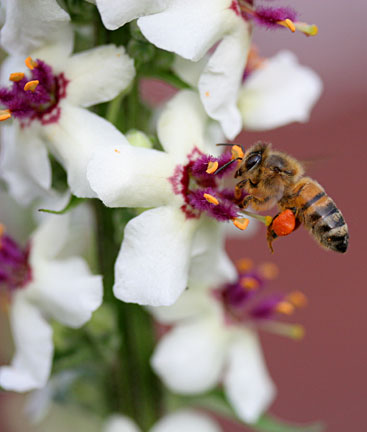
Photo: Annie's Annuals and Perennials Nursery
"Nix the chemicals! Compost, compost compost," shouts Professor Stepen Andrews, soil scientist at UC Berkeley. (Call 1-800-clean-up to dispose of all that chemical warfare sitting in your shed.) Pesticides kill beneficial insects including pollinators and natural enemies of pesky garden pests. Go organic, which means adding compost to your soil to make it healthy and productive. You won't need chemical fertilizer or pesticides if you use compost. It's full of microorganisms that feed the plants and keep them healthy for you so you don't have to work so hard. The microbes are your peeps!
Consider beekeeping. "I've seen the interest in backyard beekeeping take a great leap over the past few years. I believe the media, particularly the Internet, has been incredibly helpful in broadcasting the perils of the honeybee," says Randy Sue Collins, a beekeeper and former President of the Sonoma Beekeepers Association. "Sonoma County Beekeepers' Association has seen a significant rise in the past two years of new beekeepers joining as members. We have over 100 new members this year alone. This surge in awareness is extremely important so people know we need to keep our ecosystem in balance."
Watch movies! Order these two fabulous films about the bees: Queen of the Sun and Silence of the Bees. Organize a screening in your community or science class.
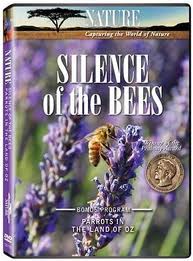
Available here

Last, consider taking action by writing a letter to your local newspaper about the fight to protect pollinators (as well as people and pets) from pesticides. Educate your family and friends about this crisis. And hurry up. The queen bees are getting annoyed at our ignorance!
Send Annie honey at www.dirtdiva.com
